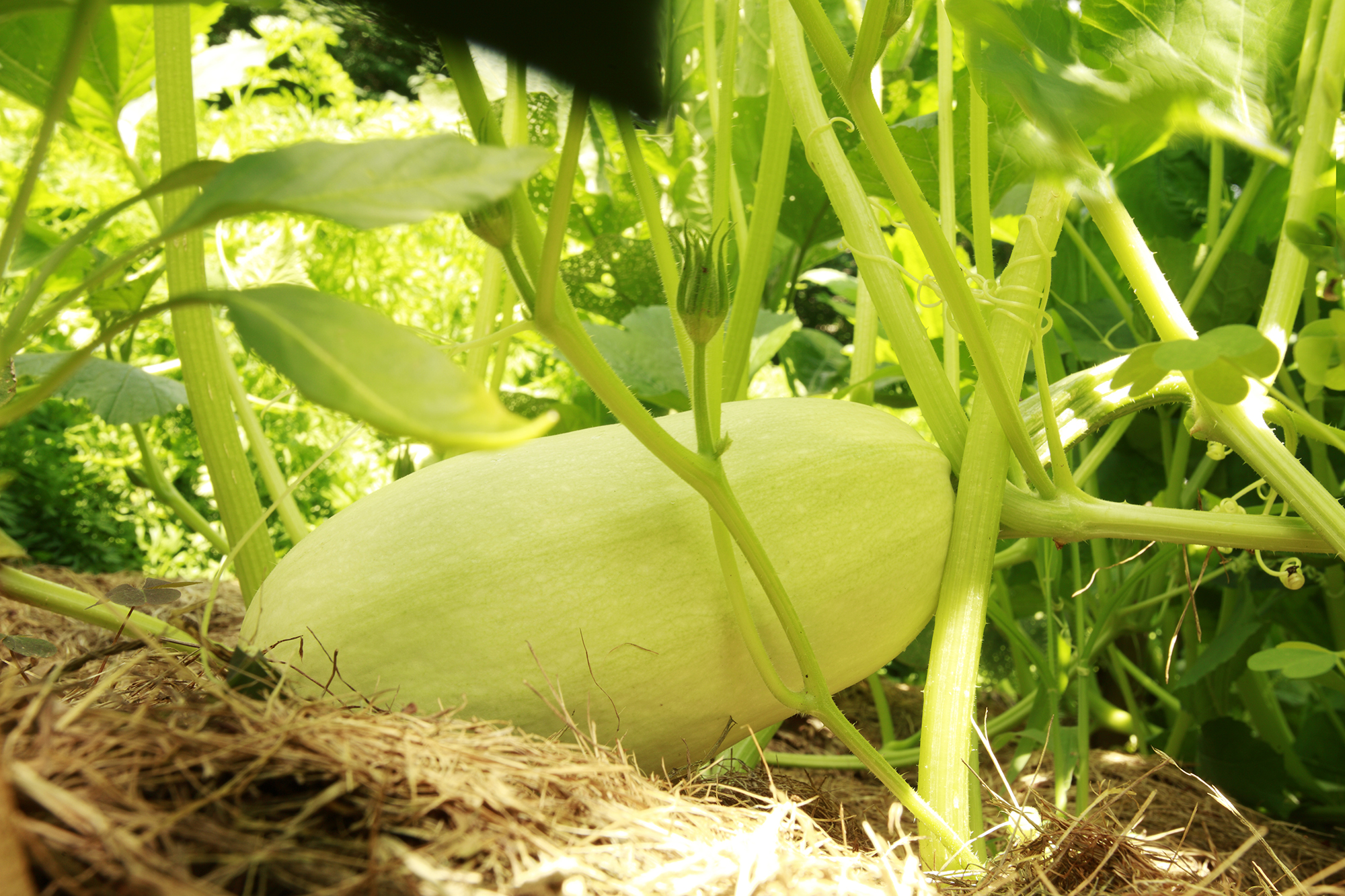When to harvest butternut squash – for the tastiest crop
Learn when to harvest butternut squash and make the most of this flavor-packed fruit


Knowing exactly when to harvest butternut squash is essential for reaping the tastiest crop. Get the timing right and you will be rewarded with glorious, firm produce that is full of nutrients and health boosting minerals. Leave it too long and you run the risk of your lovingly tended squash going soft in the frosts.
Impressive in shape and size, these sprawling vines are amongst the easiest vegetables to grow, and are perfect zucchini companion plants. Sow in spring and plant out after the last frosts, they will soon set about producing up to four or five pear-shaped fruit per plant. Pale tan in color with bright orange flesh inside, the fast-developing squash are a hungry crop and will benefit from regular watering and feeding once they have flowered.
Follow our expert guide so you can gather and store this homegrown produce with ease and confidence.
When to harvest butternut squash
‘The best time to harvest is when temperatures dip close to freezing at night and the leaves and vines begin to die and when the rind becomes hard and they’re a deep, solid color.
'You will want to harvest most of your crop before heavy frosts, in September or October,’ says Kelly Funk, President, Park Seed.
‘Cut the squash from the vine, leaving the stem as long as possible. When cutting, leave 2in (5cm) of vine attached to the fruit. If the fruit becomes cut or bruised or is subjected to heavy frosts, use them as quickly as possible or compost them.’
Can you eat butternut squash straight after harvesting?
While some smaller varieties of winter squash, such as spaghetti and Acorn, can be eaten immediately after harvesting, butternut squash develops its true, sweet flavor months after harvesting.
Design expertise in your inbox – from inspiring decorating ideas and beautiful celebrity homes to practical gardening advice and shopping round-ups.
‘Butternut squash should be harvested before any hard frost,’ says Emily Pence, Seeds Field, Coordinator, Fedco Seeds, Inc. ‘Clip squash from the vines using pruners and handle them carefully to avoid bruising. They like to be cured before eating or storing. You can do this by leaving clipped squash in the field for 5-7 days (as long as there is no danger of frost) or bringing them indoors, to a place with a warm temperature around 80°F (26C) and good ventilation.’
What month can butternut squash be harvested?
Butternut squash are ready for harvesting anytime from September onwards. They are susceptible to rotting though so be sure to pick and store well before the first frosts or any prolonged wet weather sets in.
Thankfully they are good storers, so be sure to keep them somewhere cool and dry to allow the skins to ‘cure’ and harden. Kept apart, with good ventilation, they will store well for up to six months.
Can you pick butternut squash too early?
Yes you can pick butternut squash too early. Do so and the sugars in the squash won't have developed so the flavor won't be nearly as good, and the texture will be firm rather than soft, which is particularly important if you are cooking it to mash. However, leave the squash too late and the sweet taste will soon turn, and the just-ripe texture will become unappetizingly mushy.
Do butternut squash ripen on the vine?
Ideally, butternut squash should ripen on the vine; this will ensure a better taste and better storage if you are looking to keep it for a while before eating. However, it will be better to harvest it before it is 100% ready if the weather looks to turn very cold. Frost can ruin your butternut squash crop.

Journalist Jill Morgan has spent over 20 years writing and editing gardening, interior and property features. Titles she has worked on include The English Home, House Beautiful, Ideal Home, Houzz and Modern Gardens and she writes regularly for H&G as a Contributing Editor. Whilst she is a dab hand at renovation projects and DIY, she is happiest when out digging in the garden or planning a new border.